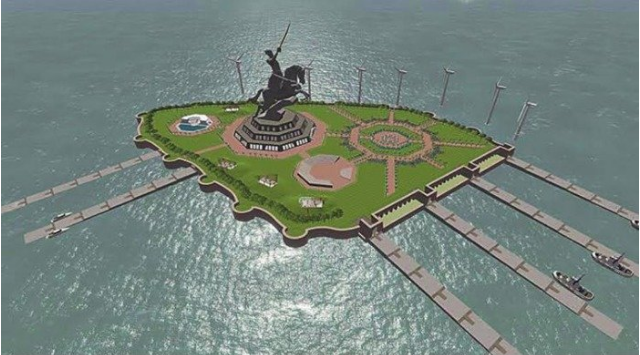
After Chhatrapati Shivaji and Maharana Pratap, the BJP has now discovered another 'suitable icon' – this time in Assam where they came to power for the first time in 2016. The icon is Lachit Borphukan, a military commander who had led his army in the Battle of Saraighat in 1671 to thwart the advancing Mughal forces in the region.
In fact, the Rashtriya Swayamsevak Sangh (RSS) had initiated its plan to reconstruct the region's history from a saffronist point of view long before the BJP came to power in Assam. Now with the political throne under their control, the right-wing forces have all the time in the world to conduct their exercise of erecting the 'alternative history'.
Shivaji, Rana Pratap, Lachit Borphukan: Pawns in a greater game
Yes, we call it alternative history because the RSS and its ilk do not care for the facts but focus more on using history conveniently to suit their project to homogenise India. There is a clear tendency to align the likes of Shivaji, Rana Pratap and now Borphukan as symbols of Hindu resistance against Muslim tyrants while the reality is nothing of the sort of 'Hindu versus Muslim' had happened in any of their cases.
The reconstruction of a subjective history in 'Modified India' is a powerful project to see the country turn into a majoritarian state but the plan is certainly fraught with risk. Particularly in Assam, which can never be equated with states like Rajasthan or Maharashtra in terms of its demography and ethnicity, finding a majoritarian icon can spark off a fire which the BJP leadership will find extremely difficult to douse.
India's history is not about 'Muslims bashing Hindus'
The BJP and the Sangh have tried to make gullible Indians understand that most Hindu kings of the past were subjected to brutal treatment by the tyrannical Muslim leaders. The fact is: each of those clashes and conflicts in the medieval ages was entirely about supremacy and not religion.
The Mughals became a part of the Indian culture after Babur came and settled here. As far as other invaders are concerned, they belonged to a superior martial race who had plundered for their own survival in regions that were geographically inhospitable. They never picked people by their religious identities. But that is not what the right-wing ideologues are convinced about. Even the army of its latest icon – Lachit Borphukan – included Muslims.
Can't Modi's BJP find an icon like Bhupen Hazarika as did Vajpayee's BJP?
It's quite amazing how the BJP's Assam equation has undergone a change since the days of Atal Bihari Vajpayee. During the times of the former prime minister, the party had backed late maestro Bhupen Hazarika to boost its prospects in Assam although that plan didn't succeed. In 2004, after Hazarika joined the party, Sushma Swaraj had remarked that although the late singer belonged to Assam, he belonged to the entire India. In the times of Narendra Modi, this inclusive view is clearly lacking. Instead of finding icons who can bridge the gap between Assam, the northeast and the rest of India, the saffron camp is busy discovering more 'religious' icons from the past to create more social divisions.













